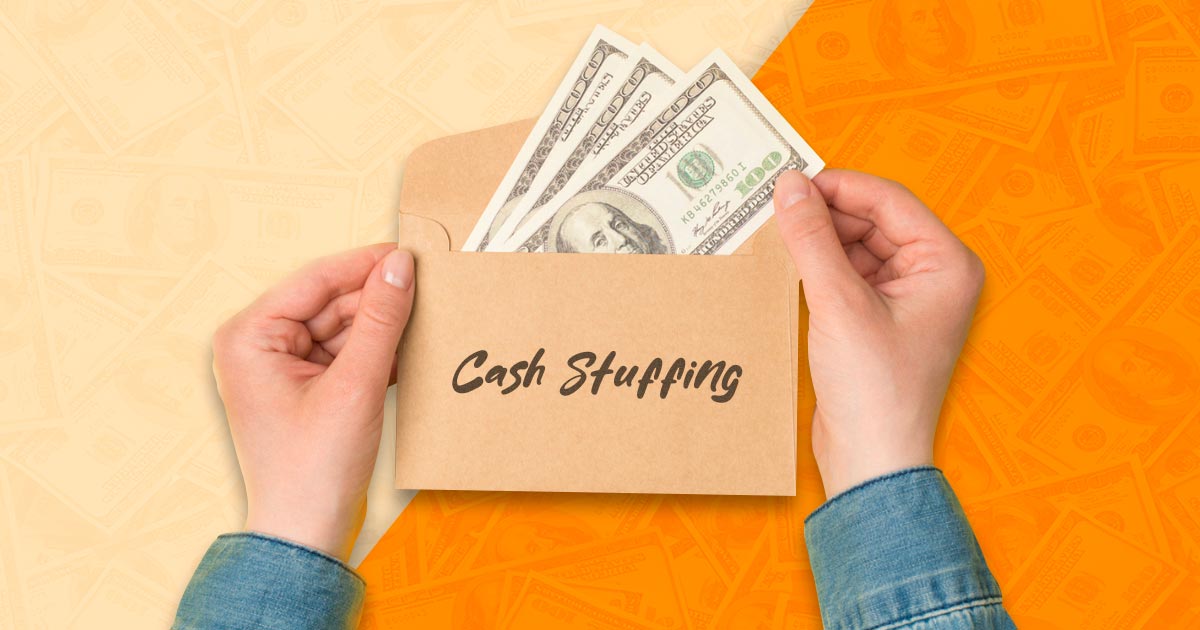Understanding the Mechanisms and Effectiveness of Cash Stuffing

Want to reduce the amount you spend? Explore the realm of cash stuffing, which is also known as the cash envelope method. While not particularly innovative, this tried-and-true method of budgeting has rekindled interest on TikTok with millions of views under the #cashstuffing hashtag.
But it’s crucial to understand all the subtleties involved. For a thorough analysis that explores the benefits, drawbacks, and methods to maximise cash stuffing for your money management requirements, keep reading. Let’s investigate the nuances in more detail!
How Money Stuffing Works
The search for efficient budgeting techniques is understandable given the rising rate of inflation and impending economic concerns. Cash stuffing is a way to make your purchasing decisions feel more real. However, how does it work?
In essence, you set aside a certain amount of money every month for several categories of expenses. After that, you place this money in envelopes labelled with the name of each category and use them only for purchases that relate to those categories. When the allotted funds are exhausted, expenditure in that category stops.
Spending is Reduced When Cash is Expended
Research suggests that people typically spend less when using cash. A 2018 ValuePenguin Credit Card Spending Report found that people tend to overpay when using credit cards instead of cash—by as much as 83% in some cases. It is usual to refer to this phenomena as the “credit card premium.”
Though there are a number of possibilities, the underlying origins of this trend are yet unknown. When paying with cash as opposed to a credit card, the cost of the transaction could become more tangible. Studies reveal that those who pay with cash are 82% better at remembering specifics about prices than those who use credit cards. Furthermore, when combined into a credit card statement, individual transactions could seem less significant.
Benefits of Stuffing Cash
Cash stuffing is a useful method for people who are trying to reduce their spending. One of its advantages is that it lessens the need for credit cards. People who prefer cash to credit cards reduce their chance of overspending as well as their chance of accumulating credit card debt.
Cash stuffing also improves financial awareness and accountability. In a GOBankingRates interview, CFP Kendall Clayborn pointed out that developing fiscal discipline requires a monthly ritual that includes assessing finances, creating budgets, and setting clear goals.
The Downsides of Stuffing Cash
There are, however, a few disadvantages to take into account. First of all, cash is not as safe as credit cards; if cash is lost or stolen, all of the money is gone, but credit cards usually come with liability insurance. Moreover, money kept in envelopes does not earn interest like money kept in a savings account. Furthermore, credit cards are convenient, help establish credit, and can help accrue incentives even though they have a tendency to encourage overspending. Therefore, it could be wise to use a hybrid strategy that combines credit card use and cash stuffing.
Starting to Stuff Cash
Before you start cash stuffing, you must determine which categories need attention. Ramsey Solutions suggests choosing categories like grocery, eating out, personal care, clothing, and entertainment that are prone to financial errors.
It is important to remember that cash stuffing does not have to be a zero-sum game. It might be helpful to try with a few categories and gradually become used to the system. After the categories are defined, evaluate total costs and set monthly spending caps for every category.
Putting Money in the Right Places and Following Budgets
Then, put the appropriate labels on the envelopes and distribute the pre-assigned amounts of cash. Following these budgets will be the next difficulty. Let’s say you have $500 set up for eating out this month. When you go out to eat, take money out of the allocated envelope to pay for the bill so that you stay within your budget. Received change should be put back in the envelope right away so it can be used again. After the allotted amount is spent, don’t make any further purchases in that area for the rest of the month.
Dealing with Internet Purchases
In a time when internet shopping is the norm, it can be difficult to completely avoid digital transactions. Some physical businesses likewise avoid accepting cash payments. Thankfully, cash stuffing can easily accept payments that aren’t cash. Make another envelope with the title “Non-Cash Purchases” or “Online Spending” to handle these kinds of transactions. Once a non-cash purchase has been made, take the equivalent amount out of the relevant category envelope and put it in the non-cash transaction envelope. Make sure that these purchases fit within your financial limits before making them.
Handling Holiday Spending
Budgeting gets harder around the holidays since there are so many specials and promotions. During this time, cash stuffing appears to be a workable tactic for keeping financial discipline. Assign envelopes to every person on your shopping list, making sure to budget a certain amount for each. Then, put money in these envelopes appropriately. This strategy not only encourages budget conformity but also makes it easier for beneficiaries to receive resources fairly.
Making Use of Unused Funds
If you spend less than you had planned, think about treating yourself to goodies that match the extra money. Instead, use extra money for things like paying off credit card debt or supporting retirement accounts. The choice depends on the specific situation. Alternatively, extra money could be carried over to next budgets.
Final Thoughts
Cash stuffing is a practical way to practise financial restraint and reduce excessive spending. Making expenses more concrete helps people adopt wise spending and budgeting practices. Its flexibility also includes support for internet transactions.
For those who are considering using it, keep in mind that cash stuffing does not require complete dedication. Start small and test a few categories that are prone to budgetary errors. If successful, then progressively expand to include more categories.

Senior Writer • Business and Information Trends Writer
Lucas writes long-form, investigative articles that explore the deeper implications of business and information advancements.

